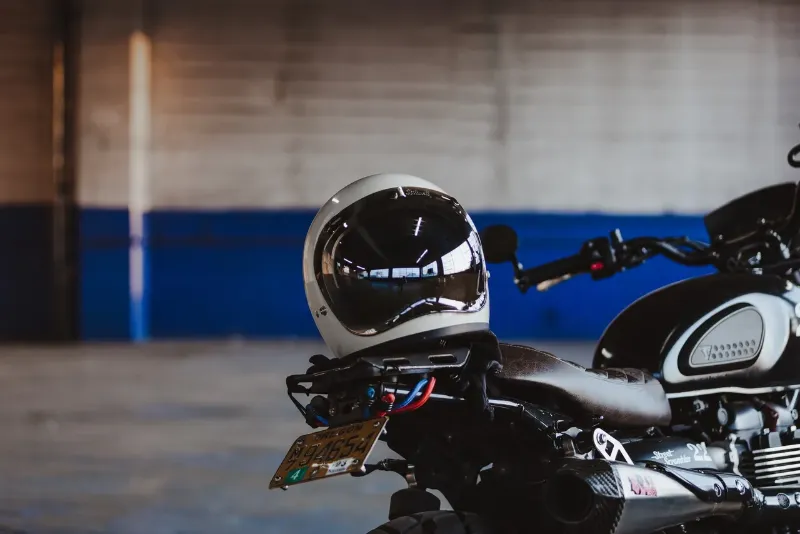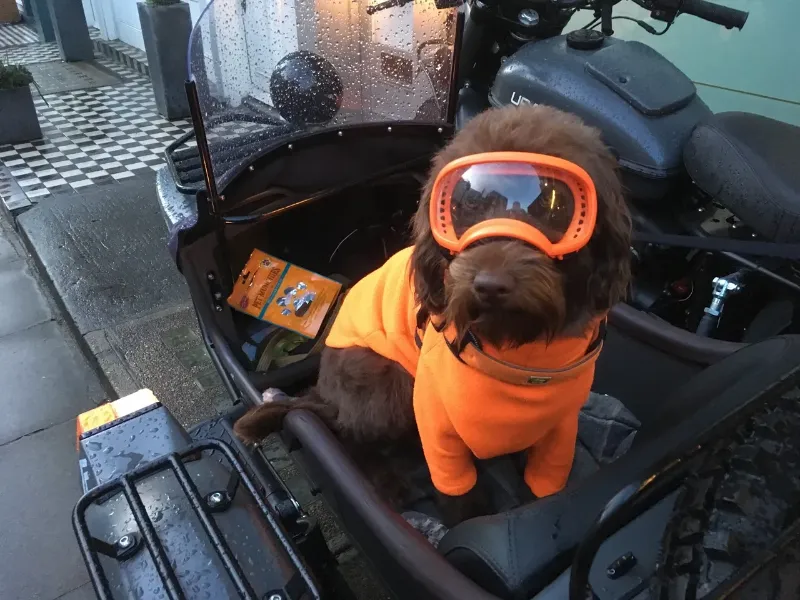When asked about riding her motorcycle, Theresa Wallach, was quoted as saying:
“You are on your own. You are not protected by two tons of steel, rubber, foam padding, and safety glass. Neither are you steering two tons of guided missile toward other cars, people, and property. If you are prepared to accept the responsibility of your actions, then motorcycling can be both safe and thrilling. Riding is an art as well as a craft and no amount of explanation can take the place of experience.” She was on point, in saying that no amount of explanation can take the place of experience, that is why, especially for the inexperienced rider, motorcycle laws are here for our protection. Below is a discussion regarding some basic motorcycle laws and also some additional safety suggestions. Stay safe, Texas riders!
1. Proper Documentation for a Rider

a. License
According to the Texas Transportation Code Sec. 521.084. CLASS M LICENSE. A Class M driver’s license authorizes the holder of the license to operate a motorcycle as defined by Section 541.201. You must have an “M” on your driver’s license, to be a licensed motorcycle rider. Just like a Class C driver’s license, for a Class M license, you must take and pass a written test and a driving test, an additional requirement, for a Class M license, is completion of an approved motorcycle safety course. You must present your certificate of completion of the safety course when applying for your Class M license.
b. Inspection
All vehicles, including motorcycles, in the state of Texas, must pass a yearly inspection. This inspection confirms that your bike is up to the most recent safety requirements in the state. BEWARE…some counties in Texas, also require an emissions test; please make sure to see what your county requires, before you get out on the road, on your bike. When you take your bike for inspection, the inspector will make sure all of the following pieces of equipment are in legal, working order: mirror, steering, brakes, tires, horn, wheel assembly, exhaust system, taillight, brake light, license plate light, rear red reflector, headlamp, and motor, serial or VIN. On your bike’s license plate, you must show the current registration sticker. You also must provide proof of motorcycle insurance, to get your inspection.
c. Insurance
Just like a car, in Texas, you are required to carry, at least, the minimum state limits for liability coverage. If you are lucky, you can get a policy with your car insurance carrier, and then get a multi-vehicle discount. I was not so lucky, when I bought my bike, the carrier that had my home and auto insurance did not carry bike insurance, so I had to go with a different carrier, for my bike insurance. Just a little something to be aware of!
d. Registration
When you get ready to get your bike registered, in Texas, you need to be aware that registration process and requirements differ, depending on whether you bought your bike from a dealership or a private individual. It is common for the dealer to take care of the registration for you. Texas DMV has a “Two Steps, One Sticker” process, where the dealer must confirm that the bike has passed inspection and present the new bike owner’s registration papers to the DMV. The cost for registration is usually part of the price you pay for the bike, at the dealership. If you bought your bike from a private individual, you would need to handle the registration on your own. If they will go with you, the Texas DMV suggests that the old owner and new owner go to the DMV to take care of the registration TOGETHER. When you go into the DMV, you will need proof of motorcycle insurance, proof of inspection, a completed Application for Texas Title and/or Registration (Form130-U), the title (signed by BOTH you and the seller), proof of identity, and $30 for the registration fee (other fees may apply).
2. Helmets for Riders Under 21

Since my head (brain) is pretty important for my job, personal injury attorney, when I ride, I ALWAYS wear a helmet! Also, I do not want to leave my husband or babies, without me, because I died from a head injury, in a motorcycle crash. Most bikers, that I know, do not see it the same way I do. They see helmets as a burden, and they can’t feel the wind blowing through their hair (not making this up). Texas lawmakers have been wishy-washy (for a lack of better words), regarding the requirement of helmets for motorcycle riders. According to the Texas Transportation Code, Sec.A661.003.AAOFFENSES RELATING TO NOT WEARING PROTECTIVE HEADGEAR, simply put, if you have completed a motorcycle safety course and are twenty-one years or older, in Texas, you are not REQUIRED to wear a helmet, when you ride your bike. The safer, albeit maybe not as “free” choice, is to wear your helmet…protect that money maker! One important side note, any passenger, under the age of 21, must wear a helmet, in the State of Texas, and, the driver can be ticketed if the passenger is not wearing the helmet.
3. Passenger Protection

As a biker, I know how passengers can change the mood of a ride. We, as the bikers, are responsible for their safety, and even the tiniest movement, by the passenger, can greatly affect the ride and the bike and in turn, the safety of all on the bike, the rider and the passenger. The biker must give the passenger a thorough explanation of what the passenger can and cannot do, to keep the ride safe. One of the first things I learned, as a passenger on a bike, is to minimize my movements and if I can, be as still as possible. A wiggly passenger makes for a dangerous ride. With this in mind, the Texas legislature, disallowed any passengers, on motorcycles, under the age of 5 years old, for both the safety of the child and the safety of the rider; trying to keep a four-year-old still, on the back of a motorcycle would pretty much be impossible.
In the Texas Transportation Code, you will also find Sec. 545.416. RIDING ON MOTORCYCLE OR MOPED which is the requirement of a permanent, regular seat, for the passenger to sit on, as well as footrests and handholds, for the passenger. These requirements, help make the ride safer for both, the passenger and the biker.
4. Equipment Requirements

The State of Texas requires that your bike have certain, functioning equipment, covered up top, under the “Inspection” section of this paper.
Not that one piece of equipment is more important than the other, as they all work together to make your bike a safe means of transportation on the Texas highways and roadways, but I did want to point out some of the SPECIFIC requirements, regarding headlamps, in Sec. 547.801. LIGHTING EQUIPMENT. (a) A motorcycle or a moped shall be equipped with:
- not more than two headlamps mounted at a height from 24 to 54 inches;
- at least one taillamp mounted at a height from 20 to 72 inches;
- a taillamp or separate lamp to illuminate the rear license plate that complies with the requirements of Sections 547.322(f) and (g);
- at least one stop lamp that complies with the requirements of Section 547.323(d); and
- at least one rear red reflector that complies with the requirements of Section 547.325(b) and may be included as a part of the taillamp.
These VERY specific requirements help give your bike proper lighting, especially lighting height so that other motorists can see you!
5. Other Safety “Suggestions”

Even though, not required by law, some other “equipment” that might make your ride safer, includes safety goggles, protective riding gear, like a reflective vest, leathers, boots, a face shield (on your helmet), loud pipes (so other drivers can hear you, in case they do not see you), a flashing brake light, and reflective tape, wherever possible, to make your bike more visible.
Remember, Theresa Wallach was on point, when she said, “Riding is an art as well as a craft and no amount of explanation can take the place of experience.” Enjoy your ride and stay safe!

